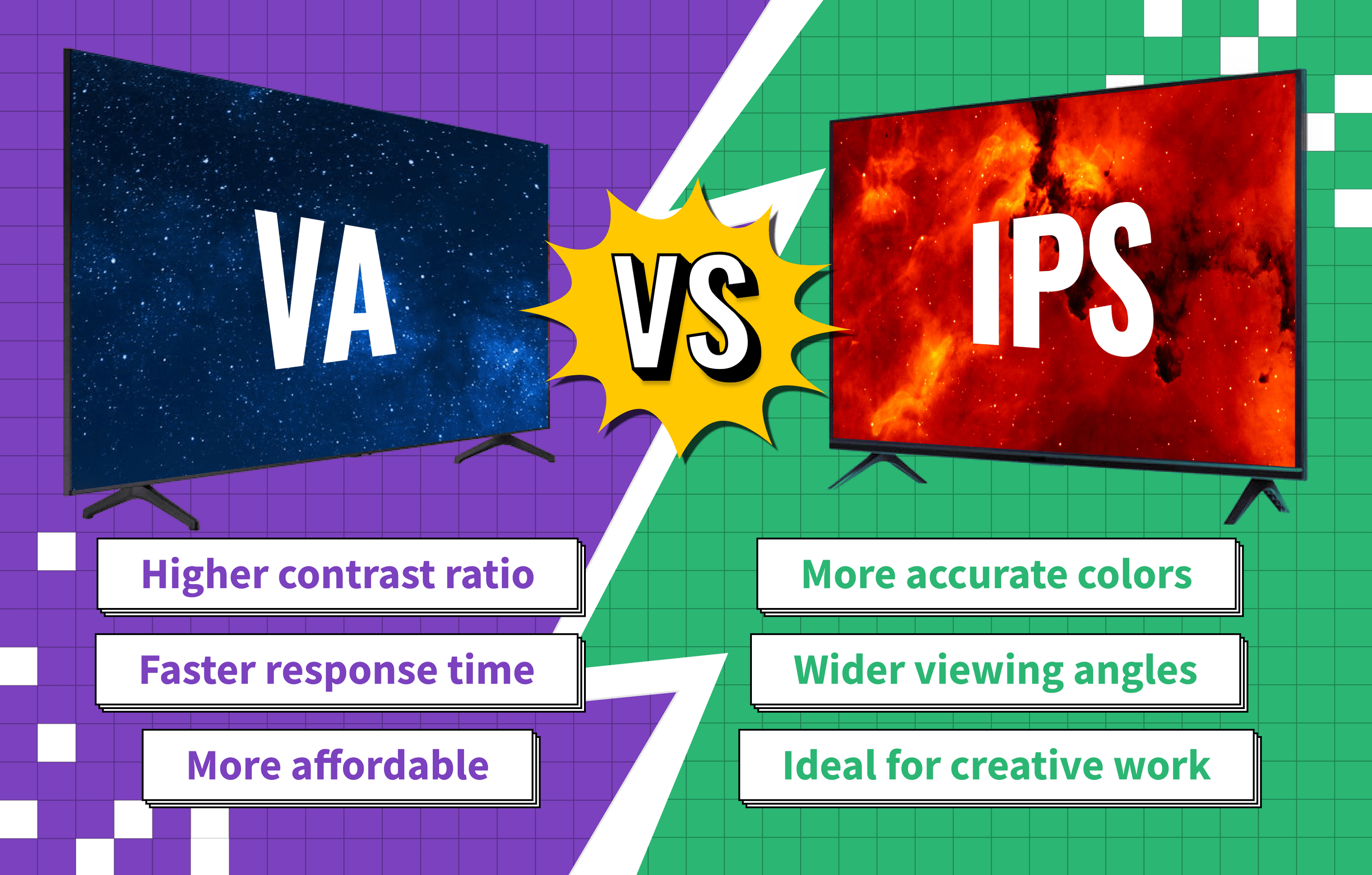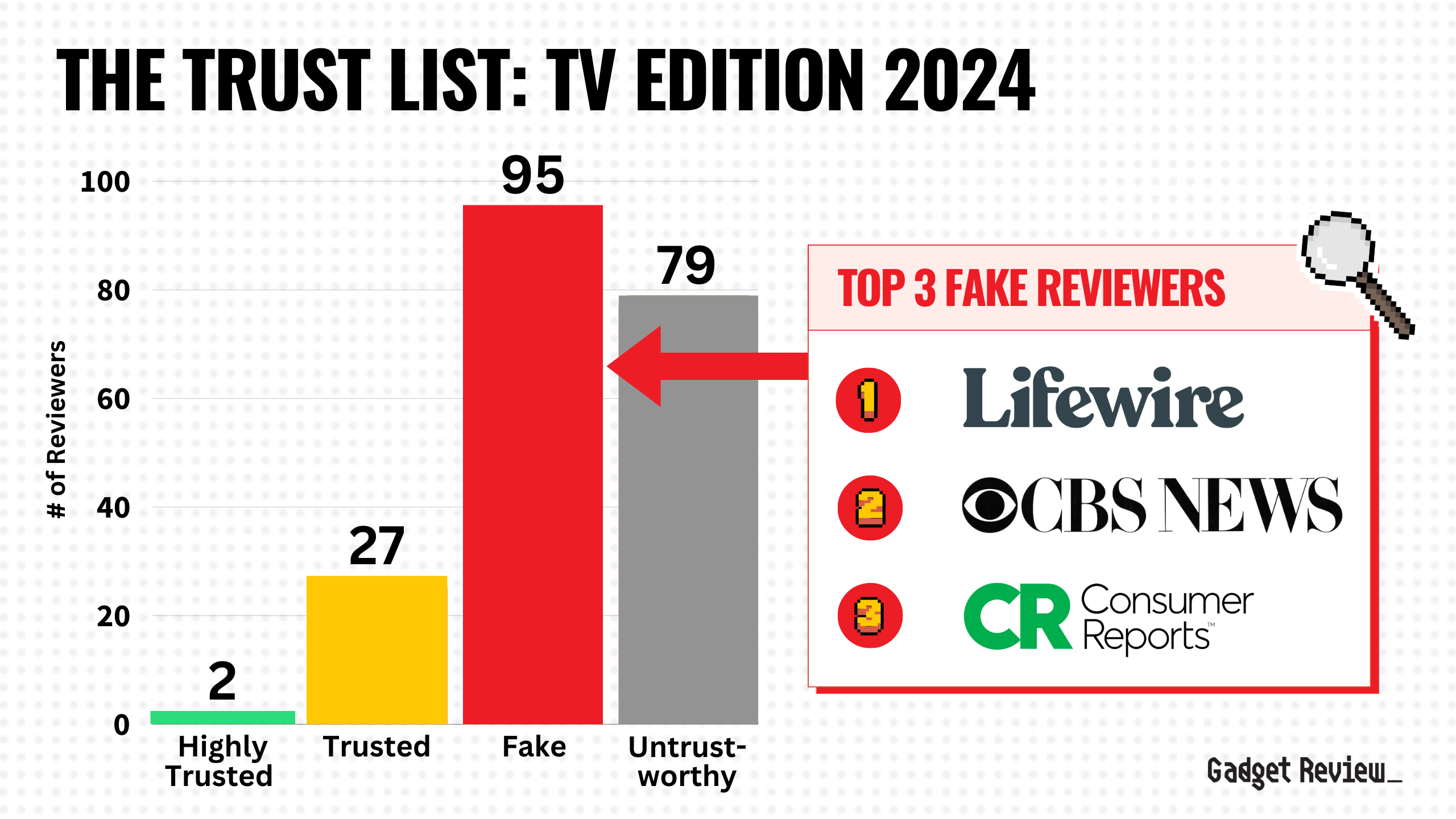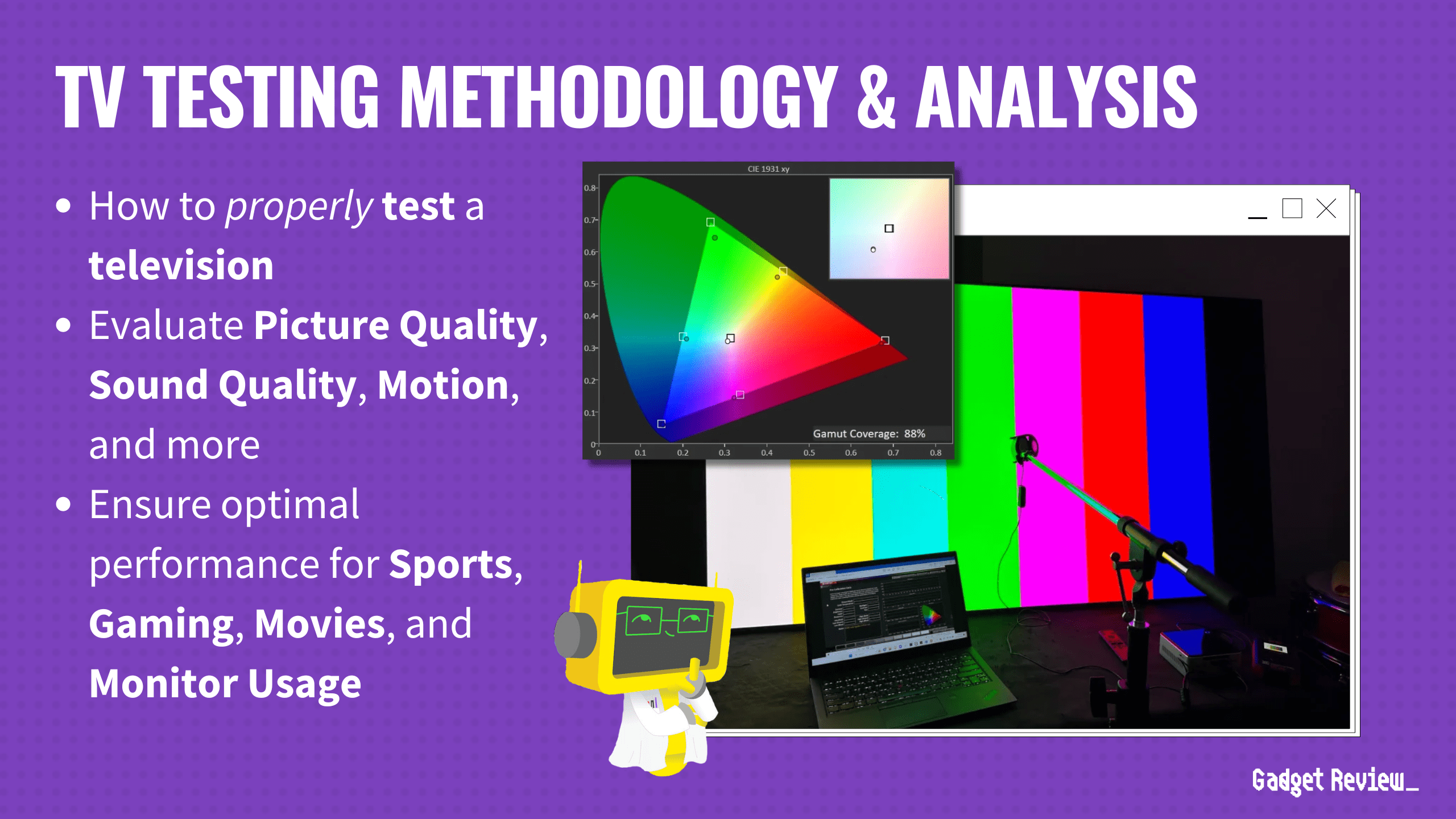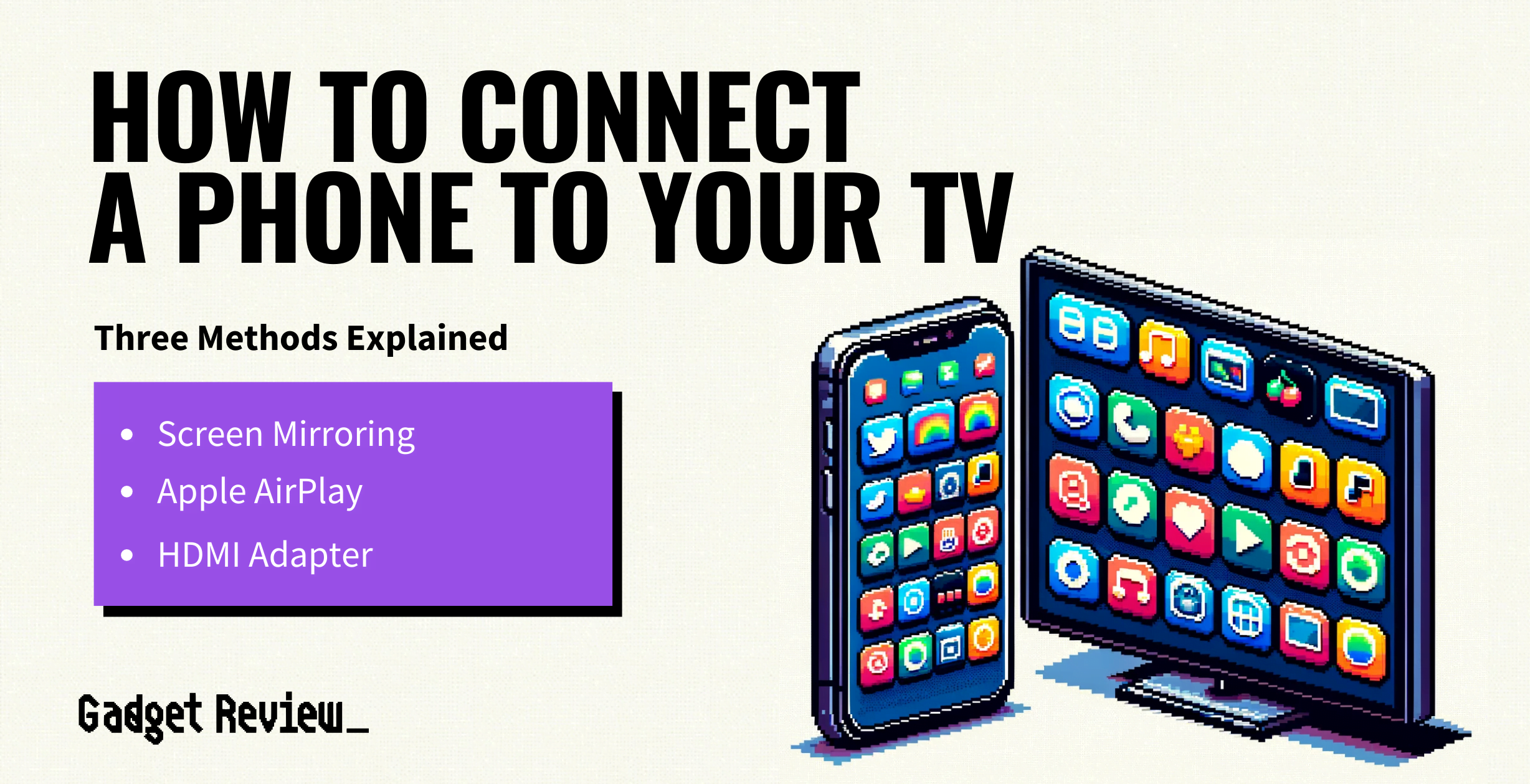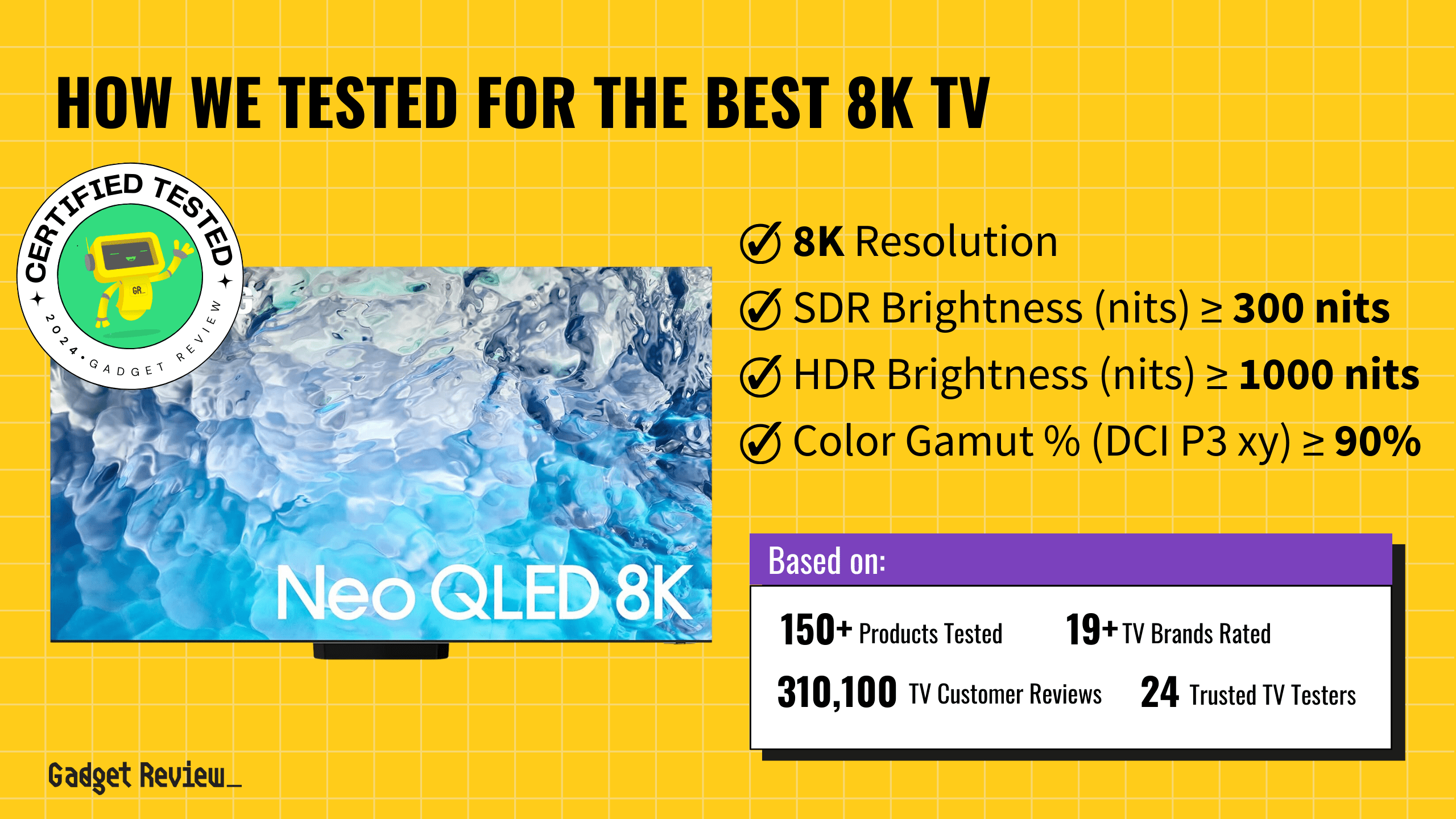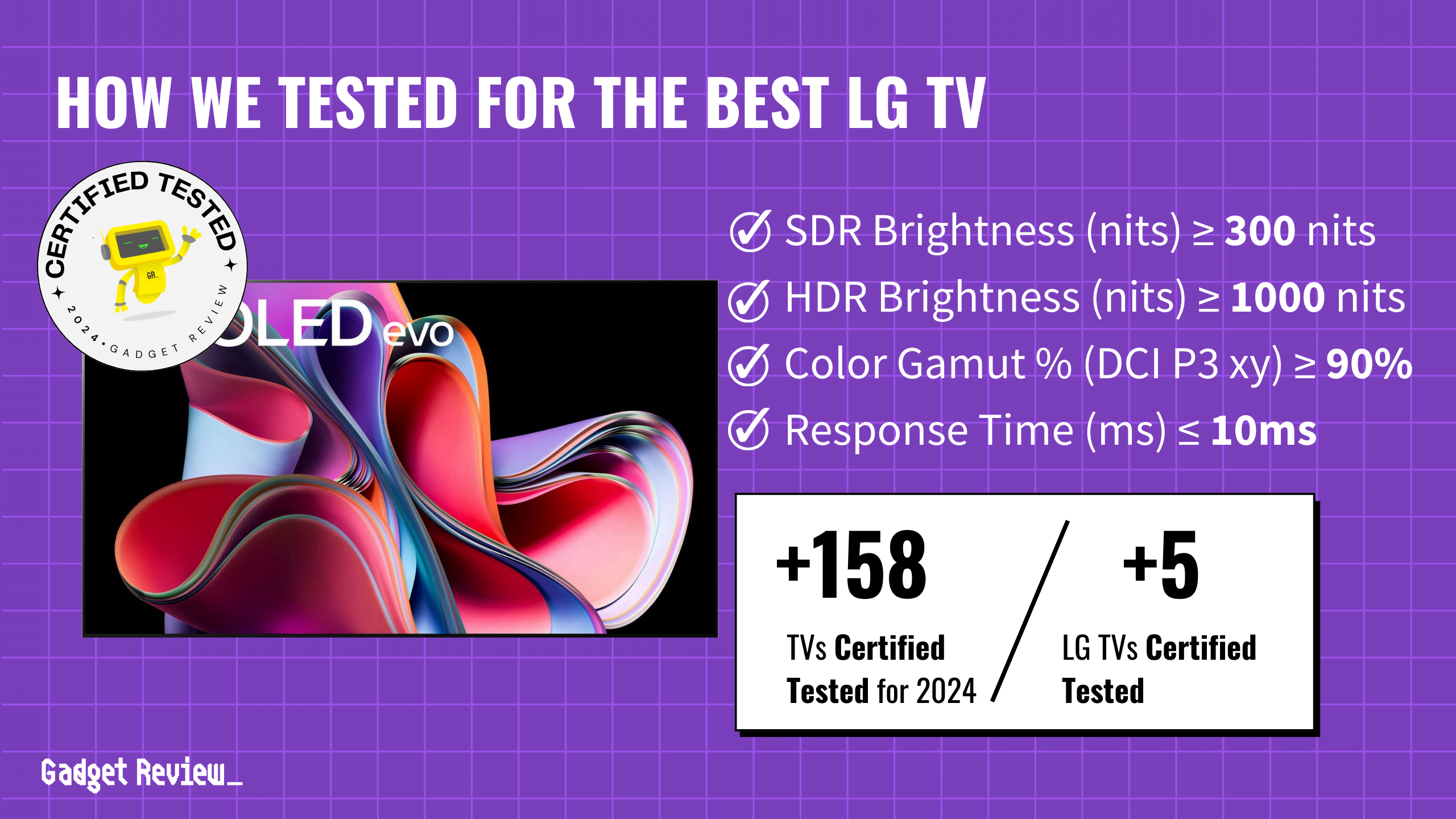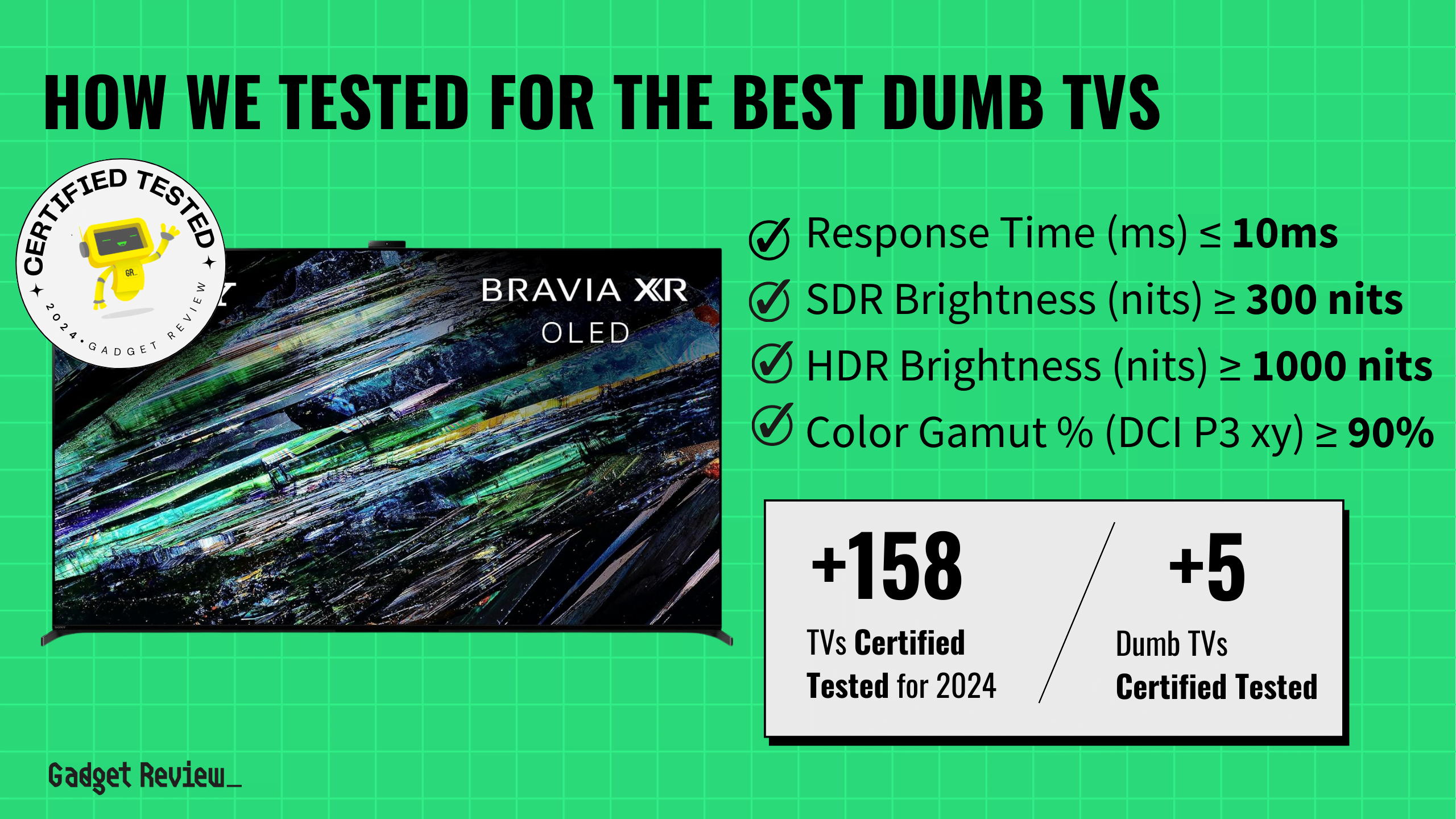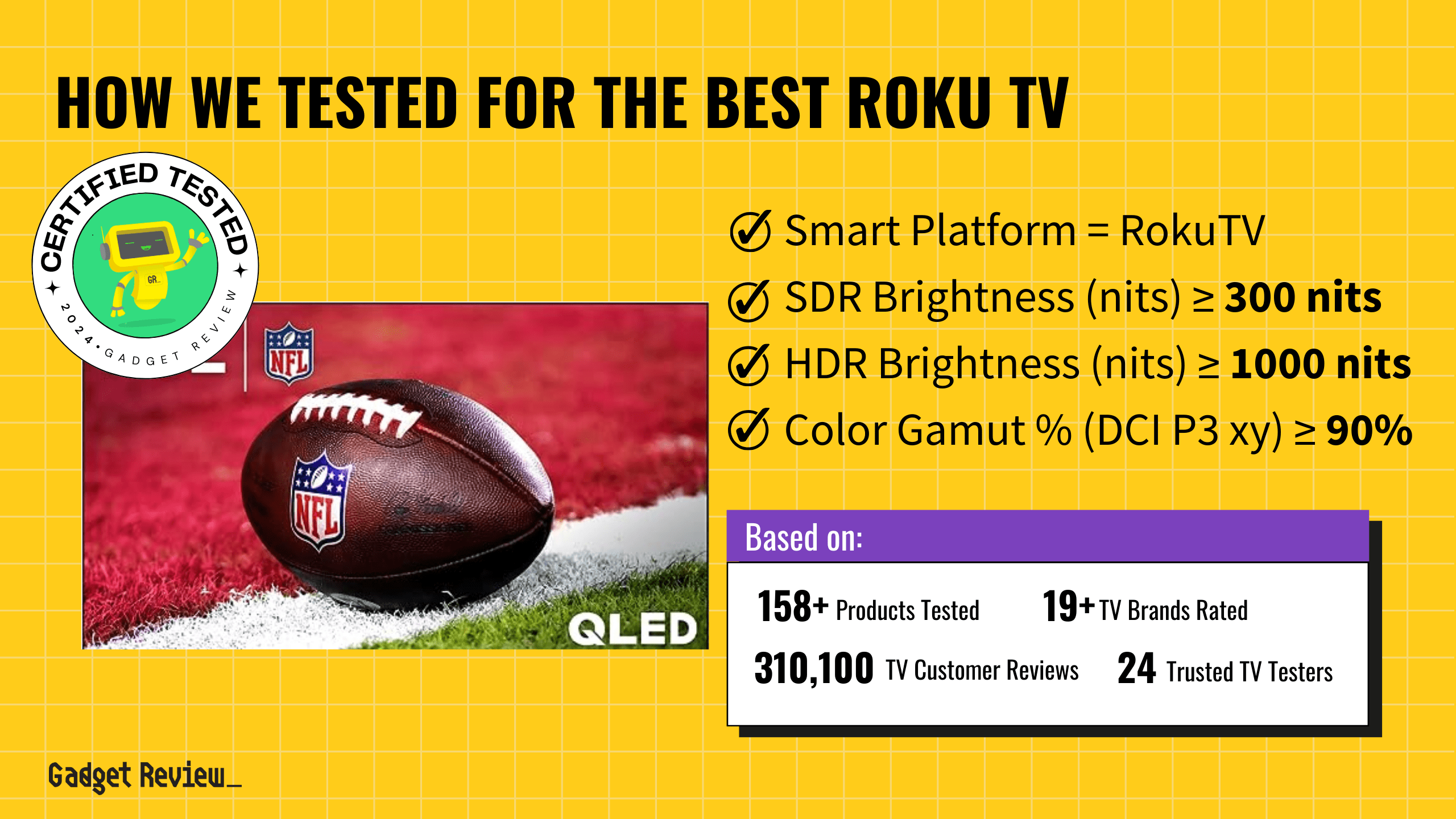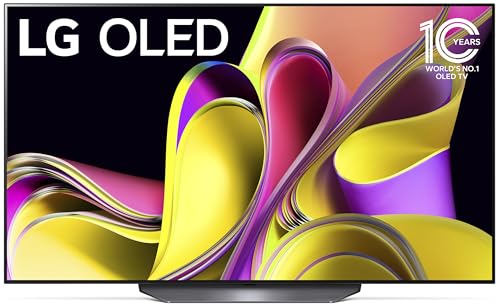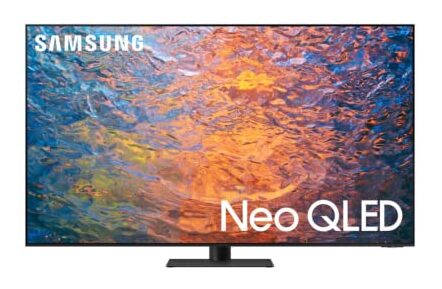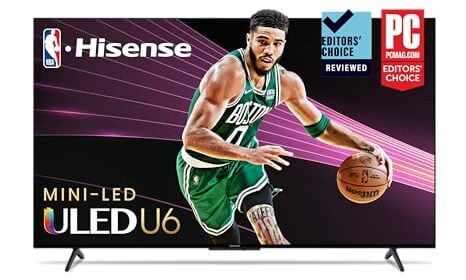Put simply, VA and IPS are two common panel technologies used for television displays. When shopping for a TV, one of the factors that need consideration is what the display uses for panel technology.
Each panel has its own advantages and disadvantages, and which is right for you will depend on your usage and preferences.
We will do our best to break these differences down so that you can make an informed decision when you are looking to get one of the best TVs for you.
Additionally, be sure to check out the best time to buy a TV to make sure you get the best deal possible.
Key Takeaways_
- Both panel types are part of the technologies that make up LCD displays available to consumers.
- VA panels have an easier time with black uniformity, which refers to their ability to display deeper blacks even in dim lighting.
- An IPS panel is a much better choice if you’re viewing at an extreme angle or you just want something with fantastic color quality.
What are the Differences Between VA and IPS TVs?
VA and IPS are both types of LCD panels, and what is right for you will be determined by how you will use the TV and your budget. Those are the most important factors to most consumers.
There are a few differences between a VA panel and an IPS panel. We’ll go over what sets them apart so you can better understand the display technology behind them.
It will help to first understand what these terms mean and how they affect the display:
- VA (Vertical Alignment) – The crystals in this display are aligned vertically, and when an electrical charge goes through them, they move to a horizontal alignment to allow the light through.
- When there is no charge sent through, they stay vertical, which blocks the light better and is the reason VA panels have deeper blacks and better contrast.
- IPS (In-Plane Switching) – These crystals are always aligned horizontally, and when a charge is applied, they turn to allow light through.
| Feature | VA panel | IPS panel |
|---|---|---|
| Color Reproduction | Colors can shift when viewed at an angle | Generally provides more accurate and consistent colors |
| Contrast Ratio | Higher contrast ratio, offering deeper blacks | Lower contrast ratio, resulting in less deep blacks |
| Brightness | Can achieve higher peak brightness | Usually have a bright display, good for well-lit rooms |
| Black Uniformity | Better black uniformity, less prone to backlight bleeding | May suffer from backlight bleeding or IPS glow |
| Viewing Angles | Narrower viewing angles; colors and brightness may degrade | Excellent wide viewing angles with little color distortion |
| Response Time | Slower response time compared to IPS and may have more blur | Fast response time, reducing motion blur |
| Power Consumption | Generally more power-efficient | Typically consumes more power |
| Durability | Slightly less durable to pressure and rough handling | Robust and durable, less prone to damage from pressure |
| Price | – More affordable – Entry-level: $200 – $400 – Mid-range: $400 – $1,000 – High-end: $1,000 and up | – More expensive – Entry-level: $300 – $500 – Mid-range: $500 – $1,500 – High-end: $1,500 and up |
Contrast Ratio
The contrast ratio is how well the TV can display blacks. If the TV has a lower contrast ratio, the blacks may look more gray than black and can really affect the viewing experience if you are watching in a dark room. A superior contrast ratio means that you’ll be able to see details far better, and white will show through far better.
The excellent contrast ratio of a VA panel makes it a superior choice. This can be a key factor when deciding between an outdoor TV vs an indoor TV as well.
However, when it comes to color production, IPS is better. IPS panels offer a wider range of colors, but because of the lower contrast ratio, this may not be as big of an advantage for you.
Black Uniformity
Essentially, we’re talking about the ability to display perfect blacks even in a dark room. Black colors can be complex for LCD screens to express adequately when in dim lighting. Having screen uniformity means displaying the same deep blacks across the entire display.
A VA panel is the clear winner here, with superior blacks that hold up even in low lighting. An IPS panel just can’t give the same black uniformity, going either blue or gray toward the center of the screen.
Additionally, you can learn more about the differences between TV backlight vs brightness.
The Viewing Experience
A few different factors go into deciding your viewing experience after installing your TV. One of them is the viewing angle, which refers to how much of an angle you can watch TV at before there’s a drop in picture quality.
An IPS panel will give you much wider viewing angles than a VA will. This isn’t a dealbreaker, but the limited viewing angles offered by VA panels should be kept in mind while shopping, especially for group viewing.
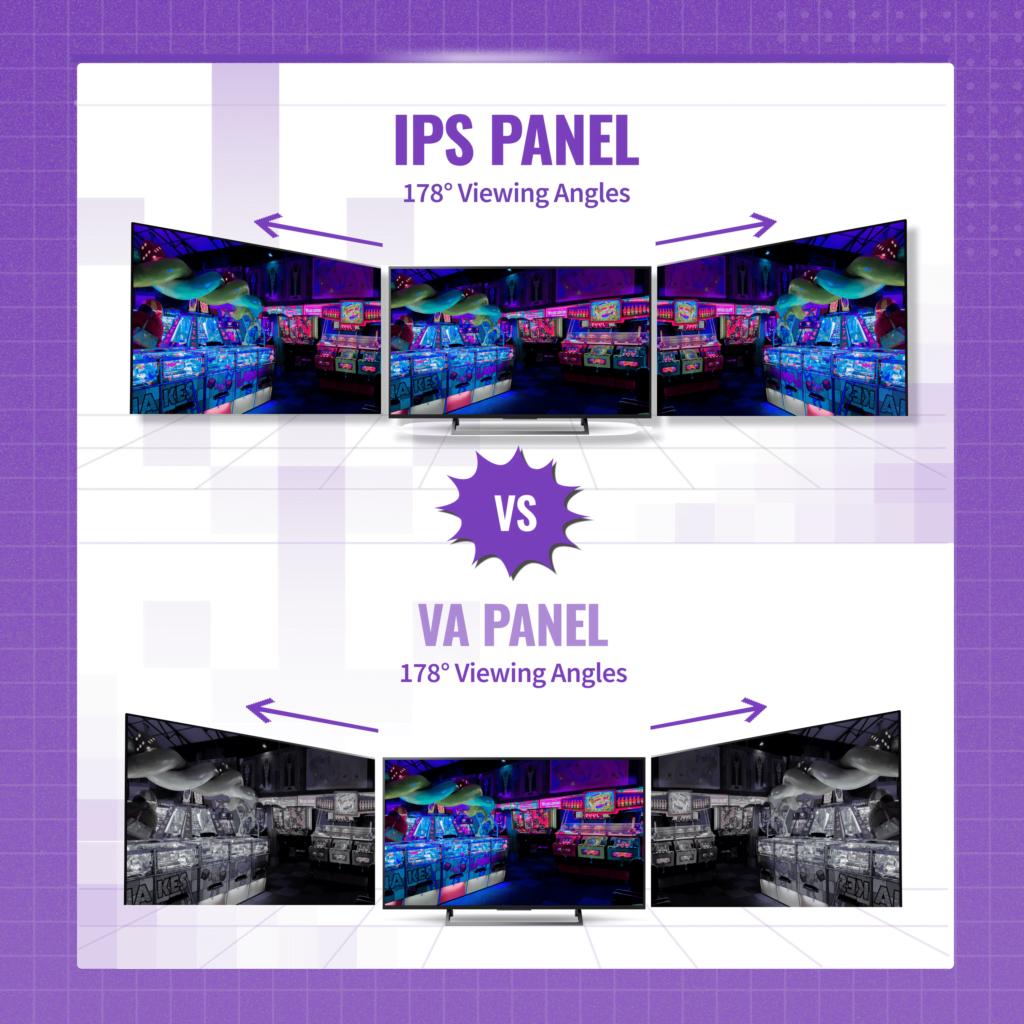
Which Type Is Better?
They are both fine options for your next TV, but your use case and budget will be the biggest determining factor as they each have areas where they are better than the other.
For most people, a VA panel will probably be the best as it will have better handling of black levels to create a more immersive viewing experience, especially for those who like to watch movies or TV with the lights dim.
However, if most of your TV viewing is during the day or with groups, an IPS panel will probably suit you better and make sure everyone watching gets a great viewing experience, no matter where they are sitting.
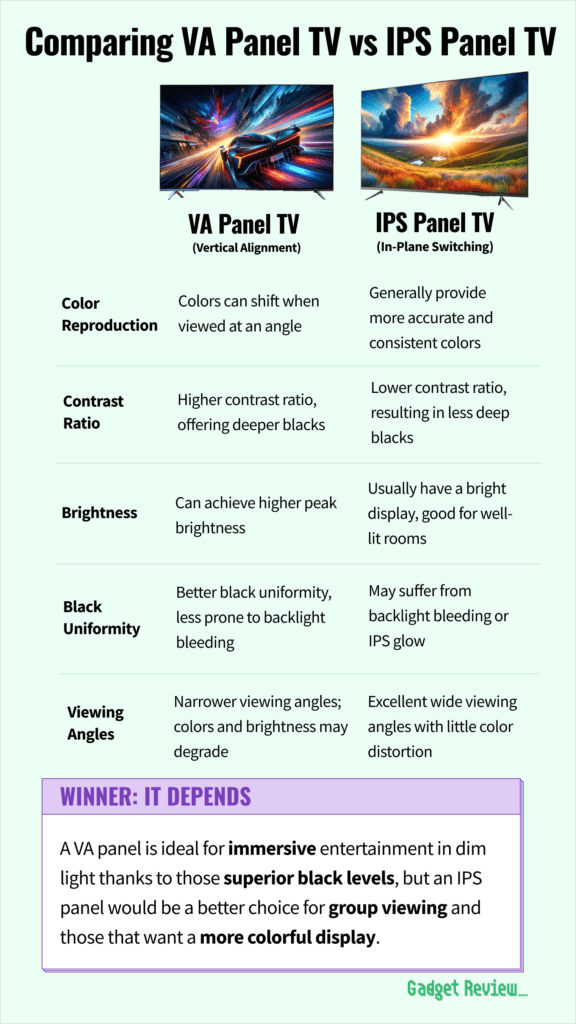
Knowing the key differences between the UHD and SUHD TV will help you make a better choice when looking for a TV. While there may not be the best TV brand for every type of screen, knowing the differences between the types can help make sure you understand the benefits of what you are paying for.
Additionally, while the power consumption between these types is negligible, if you are energy-conscious, you can check out our page on how much power a TV uses.


